Small Signal Audio Design is a highly practical handbook providing an extensive repertoire of circuits that can be assembled to make almost any type of audio system. The publication of Electronics for Vinyl has freed up space for new material, (though this book still contains a lot on moving-magnet and moving-coil electronics) and this fully revised third edition offers wholly new chapters on tape machines, guitar electronics, and variable-gain amplifiers, plus much more. A major theme is the use of inexpensive and readily available parts to obtain state-of-the-art performance for noise, distortion, crosstalk, frequency response accuracy and other parameters. Virtually every page reveals nuggets of specialized knowledge not found anywhere else. For example, you can improve the offness of a fader simply by adding a resistor in the right place- if you know the right place.
Essential points of theory that bear on practical audio performance are lucidly and thoroughly explained, with the mathematics kept to an absolute minimum. Self’s background in design for manufacture ensures he keeps a wary eye on the cost of things.
This book features the engaging prose style familiar to readers of his other books. You will learn why mercury-filled cables are not a good idea, the pitfalls of plating gold on copper, and what quotes from Star Trek have to do with PCB design.
Learn how to:
- make amplifiers with apparently impossibly low noise
- design discrete circuitry that can handle enormous signals with vanishingly low distortion
- use humble low-gain transistors to make an amplifier with an input impedance of more than 50 megohms
- transform the performance of low-cost-opamps
- build active filters with very low noise and distortion
- make incredibly accurate volume controls
- make a huge variety of audio equalisers
- make magnetic cartridge preamplifiers that have noise so low it is limited by basic physics, by using load synthesis
- sum, switch, clip, compress, and route audio signals
- be confident that phase perception is not an issue
This expanded and updated third edition contains extensive new material on optimising RIAA equalisation, electronics for ribbon microphones, summation of noise sources, defining system frequency response, loudness controls, and much more. Including all the crucial theory, but with minimal mathematics, Small Signal Audio Design is the must-have companion for anyone studying, researching, or working in audio engineering and audio electronics.
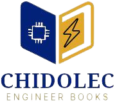
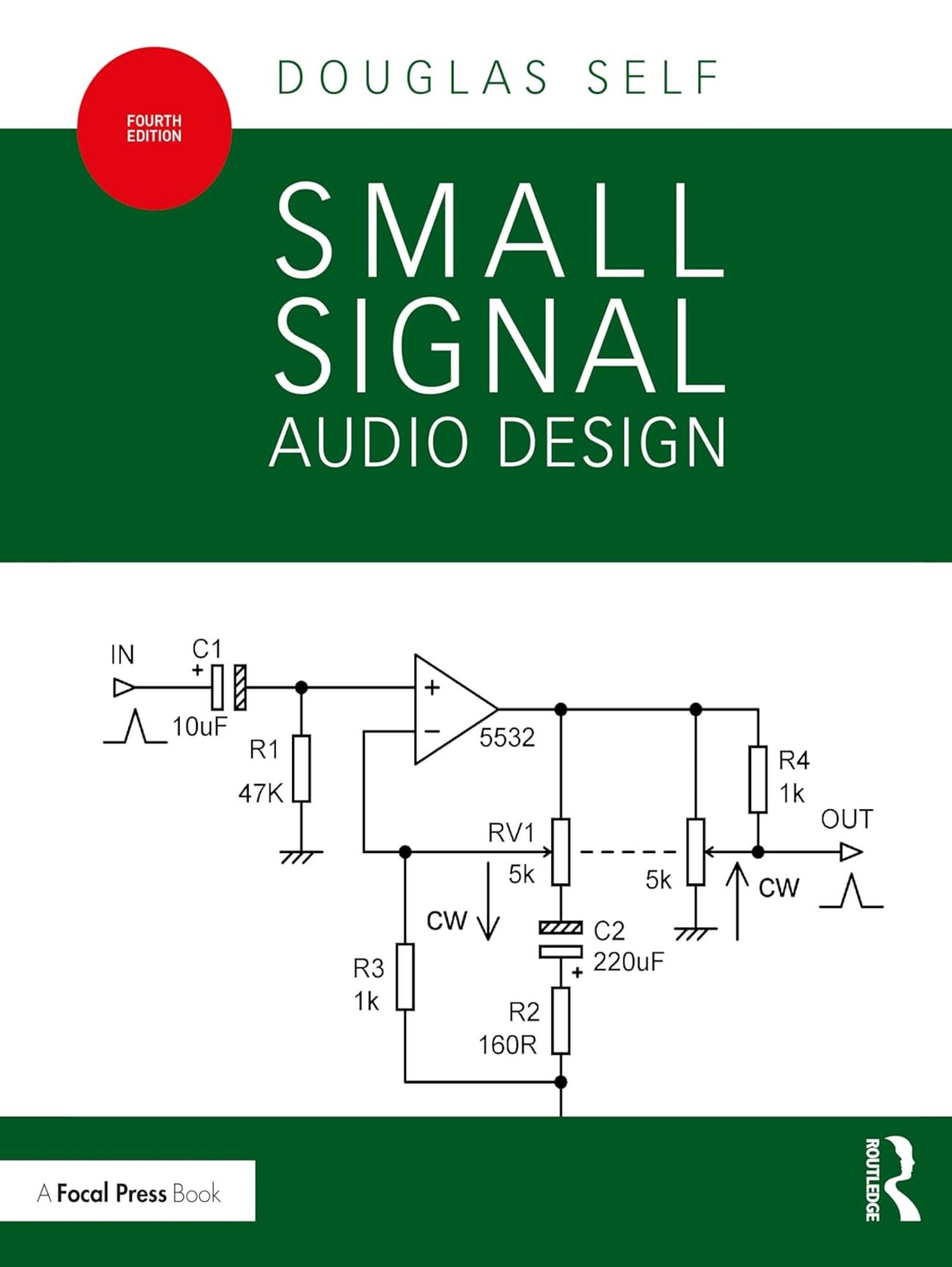
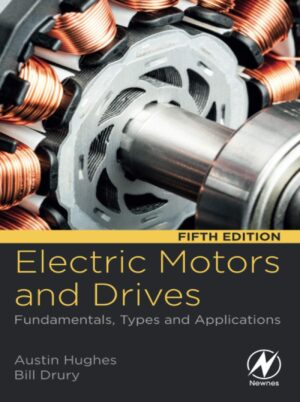

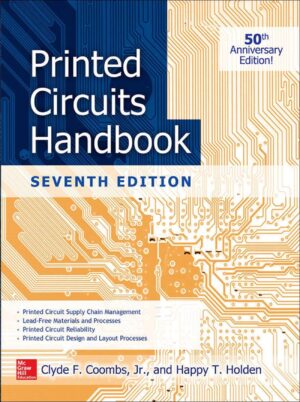
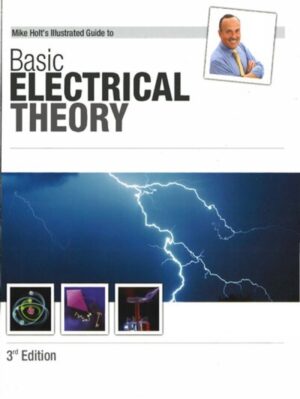

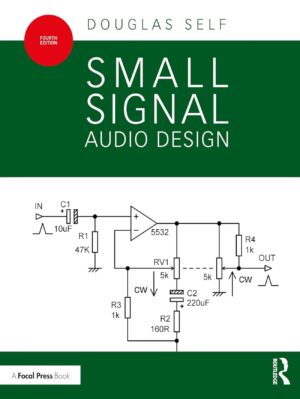
Technical but not too technical so it is easy to digest even with basic knowledge of subject
I strongly recommend this book because it provides interesting cookbook schematics along with explanations how they work in general. One can use it as a starting point for their own design. Besides, you will find out why discrete parts still matter and have an excellent introduction to a low noise design. (noise is not the main reason for discrete parts though ;-) )
No es barato,pero merece la pena por la calidad de la información que contiene.
Bon, là , tout y passe: on commence par les bases, les composants passifs (R,C,L,PCB, câbles,...), transistors, AOP, filtres, concepts préamplificateurs, correction RIAA ( extrêmement complet!), contrôle du volume, tonalité,balance,micros, Entrées et sorties ligne, ampli casque,commutation de signaux, mixage,contrôle de niveau, alimentations, interfaçage numérique. Je le conçois, il y a à lire..dans la langue de Shakespeare ( c'est abordable). Tous ceci est étayé par de nombreux schémas simples et des tableaux de résultats. Dommage qu'il n'y ait pas quelquefois des explications avec des équations...En fait, si vous voulez vous amuser,et même pour ses connaissances, on peut utiliser un logiciel tel que LTSpice VII.A noter : un très gros chapitre sur les préamplis Phono MM et MC; une étude sur le contrôle actif du volume de P.Baxandall (très instructif) ; les préamplis guitare et bien d'autres...
This is the best book ive read, for clear explanations, and real life circuit scenarios. Perfect for the audio professional and home boffin.
Definitely will be more useful as I build up a good base knowledge.
Also, if this new edition has more pages than the 2nd but without much of the material on MM and MC amps covered in the 2nd which moved to Electronics for Vinyl, then it makes sense that there is more original material in this 3rd edition than meets the eye.
Now to the book itself, as always, Douglas Self delivered a great book, the only thing I have always complained about his books in general is the lack of design equations, so you either take the circuits as they are, or you mess with them for hours in a simulator trying to make them fit your needs, I dont want any fancy math but simple equations, say, for the cut off frequency of an EQ and so on.
There are new but brief chapters on Tape head amplifiers and guitar amplifiers, regarding the tape amps it was an interesting read, however, I don't know how useful this information is, perhaps a DIYer wanting to mod his tape machine or the very few tape machine designers that are left (which probably already know this stuff) will benefit from it. There is also a chapter on variable gain stages, that is, a stage that can vary its level from -infinity up to around +30dB, not considered a volume control (which have their own chapter) by the author. It seems to me that the author has a lot of knowledge and experience in phono preamp stages, therefore there is still quite a lot of info in there even if most of it has been moved to Electronics for Vinyl, which is constantly being referenced in the phono amp chapters.
Other chapters have been expanded with more information, for instance the volume controls chapter now includes loudness controls.
Let me point out that what I've always found intriguing since the 1st edition came out, is that in the Microphone preamplifier chapter he has zero references to the Graeme Cohen Double balanced preamp, which is, if not the first, the most influential transformless preamp design used in countless preamplifiers, instead, he attributes to himself the balanced feedback idea, who was the first ? I don't know but come on, he should've at least mention it and point out the differences between his and Cohen's design.
What is still missing:
- Deeper analysis and explanations on discrete opamps/circuitry, more topologies should be covered.
- More coverage on the fully parametric EQ
- The information on Compressors/Limiters is superficial at best, no real circuits are covered, but merely block diagrams with "black boxes" of how each compressor topollogy works. This topic alone could be entitled to its own chapter.
- New opamps need to be reviewed like the OPA1602, OPA1612 and OPA1622. This section has not been updated, for example: it still displays the LM4562 as being 10 times more expensive than the 5532, when today (2020) the LM4562 costs almost the same as the 5532.
Overall, this book is one of a kind!
However, this is a great book with good explanation, easy too read for those who are already familiar
with electronics. Everything goes straight to the point.
The one drawback is that many of the components used in the designs are either obsolete or very hard to get. This is not Self's fault, it is the industry moving to SMT and integrated circuits.
Others criticize Self's tone in his treatment of subjectivity and the return to Vinyl but he speaks as someone who has genuine knowledge of the recording chain.
All technical writing by Self is worth buying.
Egal ob Einsteiger, der nur mal einen Verstärker dimensionieren will, oder der Profi, welcher das technisch machbare aus einem Design herausholen will wird in diesem Buch fündig.
Besonders die Kapitel zur Erläuterung der recht komplexen Thematik des Rauschverhaltens von Schaltungen sind sehr informativ und nützlich.
Deshalb würde ich dieses Buch als Grundlagenwerk für jeden Schaltungsentwickler sehen. Auch im Zeitalter der Digital Technik wird es immer Schnittstellen zur analogen "Welt" geben.
Die englische Sprache ist hier leicht verständlich und logisch angewendet. Also unbedingte Kaufempfehlung für HIFI Freaks und DIY Experten.
Dont be fooled by the fact that the book has a small amount of math, yes this is indeed so and it is in fact one of the only things I didnt like about the book, it should have included a tiny bit more calculations and numerical explanations, but even if there is very little math, the author already assumes you have a solid background in analog electronics, he will explain something with no previous introduction to the subject in hand, this is some of the stuff you need to know: BJT and FET transistor parameters such as gm, re,rbb. Transistor configurations such as differential pair, Sziklai, Darlington, Emmiter follower, bootstrapping, Class A,B, AB output topologies, etc.... Regarding opamps you need to know all the basic configurations, inverting and non inverting, as well as the inside topollogy of an opamp, since Self usually refers to elements inside the opamp to explain a certain behavior of the opamp as a whole (a simple example is opamp input bias current), Also you need to know about feedback topologies both in transistors and opamps, and some feedback theory such as feedback factor, loop gain, open and closed loop gain, stability, frequency compensation, time and frequency response, impulse and step response, etc.. Of course, basic electric circuits theory such as KCL, KVL, ohms law, Norton and Thevenin equivalents, voltage divider are taken for granted.
The book is full of gems, some of which I havent read before in any other book, however like I said, I would have prefered if a bit more formulae or numerical explanations were presented, as it is, many of the circuits in the book can be used in a "cook book" approach, but modifying the values to fit specific need adds extra complications, which in most cases can be deducted, but in many just makes things more difficult. A set of formulas for most circuits would have been extremely valuable.
I would also would have liked a more thorough explanation or depth in some cases, eventhough as I mentioned I think the book is full of gems, sometimes chapters are a bit short for my taste, and a lot more could have been covered.
It is important to mention thou, that there is a new edition of this book, and it seems to be an extended version of this book, I just hope they include more math's this time. I will buy the new edition for sure.
This book is one of a kind, there are some audio power amplifier design books out there, how ever theres no other book on small signal audio design that Ive encountered, at least not like this one which covers most areas of audio design ranging from mic pres, tape and vinyl amplifiers, tone and filters, mixer architectures, leveling circuits (compressors and such), etc.. this book is a must read for everyone looking to enter the world of analog audio design.
What I would also like to see, is a circuit design using different stages and see how everything interconnects, for example: the author will explain line input stages, volume control stages, summing stages, balance control stages and output stages, all of them separately, I would have loved to see a case example in which many of the topics seen throughout the book merge together.
On a side note, I must add that Douglas Self's humor is really classy and enjoyable, and only used sparingly.
This latest edition has a lot more material on design of circuitry that interfaces with for example; phone cartridges. I'm not interested in designing such circuitry, but I still found those sections very interesting and worthwhile, because they added to my overall knowledge of design. This latest edition must be at least 100 pages longer than the first edition, which I also own, and the added pages are very valuable.
I use the knowledge I have gained from Mr. Self's books to better understand audio equipment and to help decide which equipment is well designed. These aren't easy subjects and a couple of readings of the books are required; but, I've found that after reading this book and Mr. Self's book on power amplifiers, I can often look pictures of circuits boards from various pieces of equipment, or the circuit boards themselves, and have an excellent idea of their actual circuitry. I can reference datasheets from say op amps, and tell which ones have better specifications for a particular application. That means Mr. Self is doing a great job of educating me; with some work on my part!
If you enjoy the technical part of audio, especially electronics, this a wonderful book. I also enjoy Mr. Self's humor which makes the material much more interesting.
Also, I would think that everyone has been using integrated balanced line drivers and receivers for years, not contriving them with op-amps.
I don't propose to go through the book page by page, picking out every minor discrepancy, because that would be unfair, it is clearly the best book of its kind in the field, and firmly puts the subjectivists in their place. The emphasis is on proper engineering, not pretentious nonsense, and I think that if he had another 200 pages at his disposal, my objections would have been covered fully, so I do hope that he is planning a new, enlarged and modernised edition.
I think one of the problems is that the cycle of writing, or updating, a book is far longer than the rate of introduction of new electronic components suitable for audio use, such as the aforementioned balanced line drivers, VCAs, compressor/expanders, etc, so no book is ever going to be fully up to date. His choice of op-amp still stands, after many years.
Nevertheless, an experienced designer, using this book, and with recourse to data on the most up to date components, will find excellent guidance here. Strongly recommended for professional designers! But his power amplifier book is even better, also strongly recommended. Beware of the 99% of nonsense published on the web in this field, get the books.
A superb read from start to finish.
This book, “Small Signal Audio Design”, published in 2010 by Focal Press, focuses on the architecture of the most widely spread components and circuits of such devices: in/outputs, mixing systems, metering system, the implementation (or not) of a power supply, understanding of OP amp summing and passive summing, and so on.
At first, the heavy, 556 pages book can be intimidating. The presentation is clear but very sober: every chapter is divided in subcategories containing the explanation of a single point, with the help of plenty of diagrams and graphs to illustrate them. The style, even though Mr. Self allows himself the occasional pun, remains quite formal and cuts straight to the chase.
The content of this publication keeps its promise: every chapter is very clear and technical about its focus, and no argument is left without evidence. It is, however, not a book to put in every hand. As the author warns himself in the introduction, no time is wasted explaining the basic rules of electricity and electronics, and most chapters, even the “easier” one about the very common OP amp, will be hard to follow for a complete neophyte. Clearly, the author is writing for an audience of professionals and amateurs who already have a background in physics and electronics. Beware: this is book is about design, and not about the basis of electronics.
All in all, “Small Audio Signal Design” is a goldmine for every audio fanatic who wants to learn how to construct his own, potent devices, and acquire general knowledge that will serve him every day in his studio / home studio. While it can be regretted that complete neophytes will probably give up after the first twenty pages, this book is a must have for anyone who wants to get serious about designing audio components and circuits.
Mr. Self, if you read this, a big thank you for a very enjoyable and useful read!
Very Quick delivery to Quebec Canada.
It's a valuable resource and you will learn quite bit.
There is some very fine detail in the world of op amps that can be attained from this publication.
Don't be a fool. Buy it now!
My only criticism is that the semiconductors profiled are a bit dated. There's nothing about fully differential amplifiers or about the THAT line of preamps.
I work in the audio electronics field and have to say that this is the most comprehensive book on pro audio type equipment. There is very useful information on mic preamplifiers (which is hard to come by) and tons of info on Filters and Mixers. The author does a great job of putting all the information together in an easy to follow format. The way he breaks down a complete mixer board into sections is very helpful.
Most importantly I would have to say this book is the most up to date on chips and technology, from what I saw this was the newest book published on this subject and is well worth the purchase.
Cet ouvrage est un nouveau livre de référence sur ce sujet, à recommander sans réserve.
A great companion to G Randy Slones 3 books
I would warn the casual electronic enthusiast that this book could be intimidating, but it's still a worthwhile purchase as you will have the definitive compilation of Audio circuits along with explanations of every kind of filter, mic and any other possible complimentary circuit you could want. Add to that a very competent writing style that explains everything on an EE level, this will be a great reference for competent engineers, but as stated before will be difficult for people who are not proficient in the EE field to grasp.
Literally worded easy enough for someone with little engineering knowledge to grasp. Awesome book! Thanks Doug!
It's very well written and gives a great deal of theoretical information as well as practical advice on constructing small-signal circuits. It also gives you some really nice sample circuits and the information you'll need to select components. All of this is great, but you'll still need to translate all of that info to your own PCB or heaven forbid, your own point-to-point circuits.
I have an older book called "Fundamental Circuits" that I've been using for years, but the circuits in that book precede the modern digital age by a good number of years. This book's not a substitute for that. Instead, it's intended to educate the reader in the actual circuit design.
I'm going to continue digging through the book and learn all I can before applying the knowledge to my own designs.
It is one of the best books one electronics I have ever read (and I've read a few, kiddies.....). It makes me want to read more of the author's work, even though I no longer dabble in discrete electronic work. If I was still building, I would buy everything he has written.
Although it is stated that the arena under discussion in the book is small signal audio, much of what he has to say applies to other areas of electronics. His explanations are clear, concise, and yet technical enough to be really useful.
I really like that he does not worship at the usual audiophile alters (tube amps and vinyl records), but is instead guided by tremendous experience and hands-on practical expertise. (It reminded me of the famous story of the "speaker cable shootout" where a number of audiophile types were treated to blind hearing tests of various high end and fancy cables. After much fanfare and intellectual debate over the qualities of the various cables, it was revealed to the test listeners that there was never any cable swap - every listening test had been done with the same set of hardware store lamp cord. Plenty of egg on those faces that day......)
Highly recommended. Very good electronics instruction in this book, both in practical implementation and design.
The author defined his content, structured it well, and wrote about each topic at approximately the same level. This consistency is very helpful in treating the subject.
In my comments below, I point out some areas that are not covered. I do this to describe the book - NOT to criticize it. When a topic is missing, it is because it is outside of the intended scope of the book.
CONTENT
This book provides full coverage of high-quality, low-noise, and low-distortion analog audio preamplifiers and mixers, from circuits to amplify very low signals (mikes, phono cartridges), to input selection, volume and tone controls, balance and panning, metering, compression, and more. For each subject, he describes the circuit at a high level, with some discussion of key aspects of the design, and provides alternatives with their advantages and disadvantages.
Each circuit is a module that can be combined with others to create complete systems, for example, a preamp for a high-quality stereo system or a mixing board. To help you put it together, he has a short chapter on combining modules for a complete preamp, and some discussion and mixing board architecture.
At the end he includes a chapter on a variety of power supplies of the quality that is required for the audio circuits. Rather than give a complete treatment of power supplies, he gives several examples that illustrate the range that might be required.
Digital audio processing is NOT covered, except that he offers circuits for converting between analog to digital and vice versa, and for selecting inputs under digital control. Power amplification is not covered here: he has a separate book on that subject.
TARGET AUDIENCE
This is a cookbook with many practical circuits, complete with semiconductor numbers and values for all components, such that a person experienced in building electronics circuits could take the diagram, buy the parts, and build it.
It is not a beginners' book. He does not discuss how to build circuits, provide parts lists, circuit boards design, provide suppliers of parts, etc. There are many project-oriented books that offer this level of detail. Instead, we get many more design choices and the flexibility to build as we see fit.
It is also not an engineering text to teach you to design such circuits; he has done that for us.
For me, this practical treatment is perfect. I am confident I could build anything here from my past experience, and I don't need to know the operational details.
For those who would prefer the availability of circuit boards, unbuilt but complete kits, or built and tested versions, search the Web for "The Signal Transfer Company", which has some of these circuits available in kit or built forms. The link is also at the end of the book.
BOTTOM LINE
In a world where the electronics hobby has been snowed by ever-increasting complexity as the state of the art advances, this book is a breath of fresh air that makes sense of it all, and makes it possible for a non-pro to build precision equipment. For those seeking a cookbook of circuits they can combine to build what they need, it is exceptionally useful. It is everything I could want in a book of this subject, and better than any other treatment I have seen, so I can only give it five stars.
NOTE: I am an Amazon Vine reviewer. This book was provided to me free for my review, but I am not paid. My opinions are not influenced by getting a free book, nor am I asked to write positive reviews: I call them like I see them, and my reviews are not always positive.
HIGHLY RECOMMENDED!!!!!!
Self's SMALL SIGNAL AUDIO DESIGN is a valuable guide to designing and building high-performance audio gear, with an emphasis on preamps (line level, microphone and phono) and mixers. Although quite a bit of theory is discussed, the goals are thoroughly practical. Actual circuit diagrams are shown, with all component values and designations clearly stated. You can BUILD the gear Self describes.
Readers will need an undergraduate-level knowledge of electronics to fully understand the theory. But if you don't care about the theory, just adapt the circuits and start soldering.
Self brings a gentle skepticism to his theory, debunking a number of cherished myths about audio design and questioning the value of exotic (and expensive) component options touted by "high-end" manufacturers.
Anyone thinking about constructing their own audio preamp or mixer simply must read this.
The approach is not particularly mathematical; rather it's designed to be easily readable. A lot of information is presented that you'd normally never run into in a traditional textbook. Instead, it obviously comes from the author's years of experience in the field. For example, "It was therefore important to find out if the good distortion performance was a result of the 250V rating, and so I tested a series of polypropylene capacitors with lower voltage ratings from different manufacturers. Axial 47nF 160V 5% polypropylene capacitors from Vishay proved to be THD-free at both 10 and 20 Vrms." This information is not only useful, it's the type that you'd never get in an engineering class.
Highly, highly recommended.
The book is directed to relatively low signal level audio frequencies, but many of the principles can be extended to circuits for somewhat higher frequencies if the designer has the correct electronics engineering skills. All of the functions that an analog engineer would want to perform on a signal are covered. Once the signal has been modified in the desired manner, it can then be amplified to increase power. It is much easier the manipulate analog signals at low amplitude and power levels.
Audio circuits are the primary focus of this book, but instrumentation engineers, and control engineers will also find this book to be very helpful as well as anyone performing designs in these frequency ranges.
One of the other reviewers gives an excellent outline of the contents of the book so I won't try to repeat that information.
To fully understand and apply the information on this book, the designer should have experience in analog design using op-amps as well as semiconductor transistors of various types. Also, an analytical background in electronic circuitry would be very helpful to understanding and applying the principles in this book. The "hobbyist" would need some experience in analog design. A bachelor level electronic engineer would find it to be at the right level.
Anyone doing this type of design who is struggling with improving the noise and distortion performance of their circuits will find this to be an extremely helpful book.
Chapter 1, "The Basics" deals with signals, amplifiers (voltage, transconductance, current, and transimpedance), feedback, and various forms of noise. In addition to these "Greek" topics, a number of complex diagrams and equations are included here. From a gander at Chapter 1, "The Basics", one will notice that this rather extensive reference is NOT for the `faint of heart.' Chapter 2, continuing a streak of specificity, is entitled "Components." Here, Douglas Self covers topics of conductors (he discusses copper and gold among other things), Printed Circuit Board (PCB), Resistors, Capacitors, and Inductors. Once gain, for the naïve reader - or reader under the impression this reference would be less specific or more broad - the information easily goes over one's head. Positive, despite the inaccessibility is that Mr. Self knows and understands what he is discussing.
Chapter 3, "Discrete Transistor Circuitry," delves into topics of bipolar transistors, the transistor equation, and unity-gain buffers. Chapter 4, "Op-Amps and Their Properties" provides a history of "Op-Amps" (`... a differential amplifier, responding to the difference of the input voltages while ignoring any common-mode component'), and provides everything and MUCH MORE than one needs to know about "Op-Amps." Again, numerous complex diagrams support Self's textual descriptions.
Chapter 5 covers a more accessible topic, at least in name, "Filters." Here, Self details Passive/Active filters, low-pass/high-pass filters, characteristics of filters, distortion, differential filters, and etc. Still with plenty of technical jargon intact, the "Filters" chapter seems the slightest bit simpler. Brief Chapter 6 covers "Preamplifier Architectures" covering passive/active preamps and `the gain-distribution problem.' Chapter 7, "Moving-Magnet Disc Inputs" deals with issues of signal levels on vinyl (recording, etc.), equalization, inversion, noise measurements, and filters. Again, numerous detailed diagrams and technological references are included here.
Chapter 8 focuses on "Moving-Coil Head Amplifiers," providing characteristics , strategies for amplification, and configuration. Chapter 9, "Volume and Balance Controls" deals with advanced volume control principles, potentiometers, and of course balance controls. This chapter is is relatively lengthy. Chapter 10, "Tone Controls and Equalizers" details all you want/need to know about different tone controls and equalizers (both parametric and graphic). Chapter 11 delves into "A Complete Preamplifier," which includes a section entitled `architecture and philosophy' as well as sections detailing line inputs, tone control, and active gain. Chapter 12 delves into "Mixer Architectures," which considers performance factors (noise and distortion issues) alongside an in depth look at the mixer with quite complex diagrams.
Chapter 13 covers "Microphone Preamplifiers" while Chapter 14 deals with "Line Inputs" focusing on internal/external signals, unbalanced/balanced connections, and mismatch effects among other things. "Line Inputs," a major component of signal design, is obviously one of the lengthier, more precise and complex chapters of this text. Chapter 15 covers "Line Outputs" (Unbalanced, Zero-Impedance, Ground-Canceling, etc.). Chapter 16 covers "Signal Switching," while Chapter 17 covers "Mixer Subsystems." Within this chapter, Self discusses a number of specific topics ranging from `Input arrangements' to `routing systems.' This chapter covers `technical aspects' of the mixer from an engineering perspective. While it is again, inaccessible to the more simple-minded audio enthusiast, it does show how complex the process of signals is.
Chapter 18 covers "Level Indication and Metering" (Peaks and various meters), while Chapter 19, "Level Control and Special Circuits" covers gain, compressors, limiters, noise gates, and clipping among other topics. Chapter 20 focuses on "Power Supplies" (voltage, etc.). Final chapter, Chapter 21, focuses on "Interfacing With a Digital Domain."
Essentially, this book is a fully equipped reference and to denigrate it with a poor rating would be almost `scandalous.' However, only the gifted audio designer will understand all the concepts covered and sometimes trivialized within this text. It is interesting, but it so dense that it easily goes over one's head.
I eventually cobbled information together through textbooks, databooks, and manufacturers' handbooks such as National Semiconductor's Audio/Radio Handbook, Analog Device's Applications Reference Manual, and Burr Brown's application notes. This book can just about replace all those.
It focuses on small signal audio design. There is no mention about audio power design and little information included about converters and digital filtering. That is just as well since those are topics worthy of complete books by themselves.
Self's coverage of small signal audio design is exemplary. This book really seems aimed at professional audio equipment designers. While hobbyists would undoubtedly learn a lot, those individuals are typically not restricted by economics and can afford to specify higher quality components for their low quantities. For high or moderate volume equipment designers, cost is a key constraint.
I was happy to see Audio Precision (AP) graphs included in the text. First, they provide easy to interpret performance metrics. Second, I used an AP system for most of my testing and it's good to see they're still around.
This book may have a limited audience, but for those interested in small signal analog audio design, it is a first rate book.
なんといってもわかりやすいです。たとえば、ジョンソンノイズ、ショットノイズの解説など、普通の解説書だと式だけでてきておしまいですが、本書は具体的なデータや応用の場面がわかるような具体性のあるデータが示されるので理解しやすさが違います。抵抗2本のアッテネータ回路ひとつとっても、これほど奥深い解説がなされた本をほかに知りません。
全体の1/5を読むだけでも、元が取れる本です。
There are topics that I wish to see extensions in the second edition. For instance, I like to see more information on electronic volume control ICs and discrete linear regulators. Grounding and wiring are important in power amplifiers. These are not treated in this new book. Are they also important in small signal and should be included in the new edition?